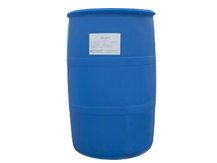"Printing and dyeing wastewater treatment technology policy" is formulated based on long-term engineering practice and the evolution of textile printing and dyeing wastewater quality. The key point is that the concentration of printing and dyeing wastewater is not very high, so the first stage of anaerobic process, namely anaerobic hydrolysis and aerobic biological treatment process, is adopted. When the concentration of refractory substances in textile printing and dyeing wastewater increases, and the environmental quality standards continue to improve, it is difficult to achieve the discharge requirements by simple biological treatment. In addition to biological treatment, physical and chemical methods are used to supplement treatment to meet the discharge requirements. This comprehensive treatment technology, which is based on biological treatment and supplemented by physical and chemical treatment, is recommended by the "technical policy for printing and dyeing wastewater treatment".

Dyeing process is the main pollution process of printing and dyeing industry, and it is of great significance to promote cleaner production in this process. For example, it is a good method of cleaner production to modify the fiber, improve its dyeing performance, apply dyes with high fixation rate and high utilization rate, and develop dyeing process and equipment with high dye utilization rate.
Burkinshaw and other researchers believe that dendrimer pretreated cotton fabric can significantly improve the dye uptake of reactive dyes, and even achieve salt free dyeing. Researchers have also done a lot of research work on fabric modification to achieve salt free dyeing with reactive dyes.
The use of ultraviolet, microwave and high-energy rays to treat textiles can also improve the dyeing properties of fibers, and some can be directly used for fixation. By using small bath ratio dyeing equipment, the bath ratio can reach (1:4) ~ (1:6), which can not only save dyes and auxiliaries, but also reduce waste water discharge and dye residues. It can save dye and chemicals by 30% and water consumption by 40%. Some scholars have studied that the use of ultrasonic dyeing can improve the dye uptake in a short time at low temperature and save energy.
One of the purposes of cleaner production is to minimize the consumption of water, dyes and chemicals and energy. Non water or anhydrous dyeing is an important method of clean dyeing. In recent years, supercritical carbon dioxide is used as dyeing medium, dyeing without water, after dyeing generally without washing or light washing, carbon dioxide can be reused. This method has the advantages of no water, no pollution, short dyeing time, less energy consumption and recyclable residual dyes, which is a direction of dyeing development in the future.